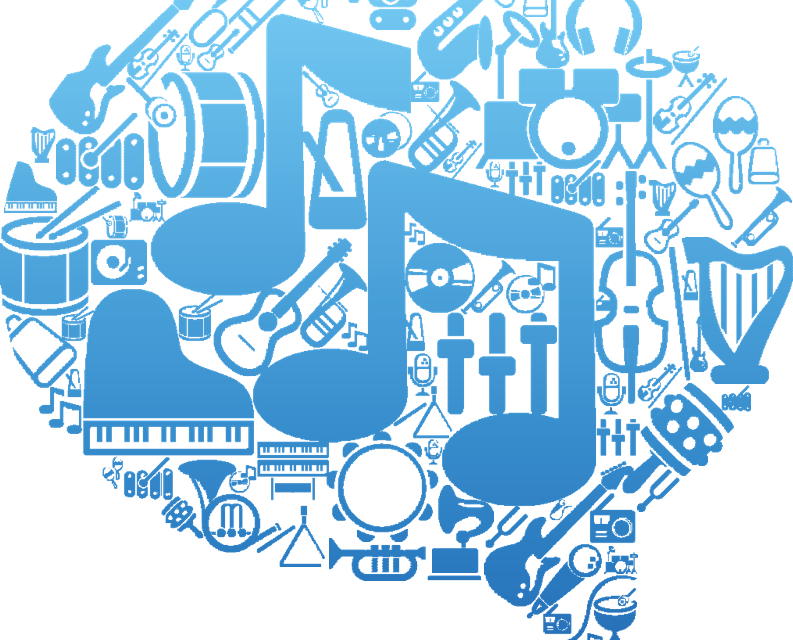by Eric L. Martin
“Humans need to communicate, share, store and create. As a species, we’ve engaged in these functions for centuries. There’s really nothing new about them. What is new are the forms, or tools, that students use to meet these needs.”
Over the several months leading up to last November’s elections, I was inundated (as I’m sure you were) with campaign ads touting the virtues (or lack thereof ) of candidates of all persuasions and ilk. These ads showcased each candidate’s commitment and ability to address and solve our largest challenges, most important human needs and their ability to perpetuate and allow us to attain the quintessential “American Dream.” Beyond the economy, much emphasis was and still remains placed on maintaining or reclaiming our ability to compete and lead globally. The conversation about our young people was often about the loss of our educational edge. We’re convinced, and maybe rightfully so, that we are failing to educate and prepare our children for the competitive challenges of the 21st century. It’s a valid conversation, however, I feel a responsibility to bring another voice into the discussion.
Folks around my office sometimes fondly (or not so fondly) know and label me “a diploma snob.” For some, a diploma snob means where you went to school, but for me, and I own this observation, it’s more about how you’ve been prepared and trained to think and reason. Science, technology, engineering and math, the STEM concepts we hear about so often, have their rightful place and I certainly support moving from STEM to STEAM, infusing and demanding that the arts be inserted and recognized as a core, valid and vital part of the learning and achievement equation. However, my support for STEAM is more deeply rooted in my “snobbery.”
What I care about in every student and every professional I encounter, be it personally or for Music for All, are their “abilities to think and reason.” I look for and build my faith in the future of our children, our nation and our culture on the ability to teach children “how to think and reason,” a very different concept than “what to think.”
I am a product of the arts, infused naturally and effectively, in a total education. Engagement in the arts (and other programs of human engagement), coupled with core academic subject matter, gave me the opportunity and platform to help understand and advance human, societal and business relationships. Understanding not just that things work, but how they work, why they work and realizing their impact on ones’ self, and others, form the essence of prepared and effective leadership. In this context, I am a “snob” about preparing our children to thrive effectively in the future. So what does this have to do about the 21st century workforce? For me, its about the 21st century “Life Force.” I’ve traveled across the country speaking to students, teachers, administrators and parents with an “artistic” interest that drives my professional commitment. Almost daily, I struggle to hear effective dialogue and collaboration as our leaders seek to address, solve and resolve some of our most difficult local and global challenges and conflicts. I long for more conversation with the historical, philosophical and “civil” teachings and dialogue about the development of America’s strength and destiny from an ultimate commitment to the common good, general welfare and societal empathy and commitment to the well being and advancement of “the least of those.” I miss experiencing our American commitment to active listening, the common good and the art of compromise. Too often, the dialogue (or absence thereof) is centered on winners and losers, my way or the highway, and to the winner goes the earned and rightful spoils.
I often ask what our student performing arts ensembles would be and sound like if they did not learn skills about individual and ensemble commitment to concepts like intonation, leading and following, collaboration and exchange of thoughts and ideas, or if they refused to accept and see the benefits of leadership. I can only imagine the unintended discordant result of an ensemble whose idea of excellence is “every man or woman out for himself or herself.”
Great ensembles know, and are taught, that great results only come from collective achievement. The whole is only as successful as the individual parts comprising it. Performance responsibility of each individual is necessary for ensemble success. In other words, all members of the ensemble have a vested interest in the skill development, wellbeing and achievement of others. “We’re in it together,” is a vital and essential factor and tool for success. We become great when each and every member not only understands “the what” and “the how”, but also “the why.” It is then that they can lead themselves with effective decisionmaking and collaboration for the “common good.” If only all of our leaders, including government leaders, shared that common understanding. In the end the “audience,” like our world, benefits.
“The combination of core academic subjects, 21st century themes and 21st century skills redefines rigor for our times. However, rigor traditionally is equated with mastery of content (core subjects) alone, and that’s simply not good enough anymore. Growing proportions of the nation’s labor force are engaged in jobs that emphasize expert thinking or complex communication – tasks that computers cannot do. The assessment is forward looking, focusing on young people’s ability to use their knowledge and skills to meet real life challenges, rather than merely on the extent to which they have mastered a specific school curriculum.”
Harvard Professor, Shelley Carson, wrote the following for the Huffington Post after a 2010 G-20 Summit meeting:
“The G-20 Summit in Toronto is now over and, not surprisingly, one of the conclusions of the conference was that in order to attract investors, nations need to provide an ’environment that promotes creativity.’ From politics to business to education to sports, creativity is one of the buzzwords of this decade. We used to think of creativity as the province of artists, musicians and writers. Now we’re waking up to the fact that all facets of modern life demand creative input.”
Most social and educational scientists agree that creativity is a necessary core “skill.” Creativity is an essential tool for 21st century success. And the beauty of our opportunities is that the human brain is built for creativity. Our responsibility as practitioners and promoters of music education is to ensure that our children have access, opportunity and skills necessary to discover and activate their God given and innate abilities. Our individual, organizational and human success depends on it. In short, Dr. Carson summarizes that,
“creativity is important for artists, writers, musicians and inventors; but it is also crucial for societies, businesses and individuals who need to juggle fulfillment with the demands of the rapid-change culture. You not only need to be creative to enhance your life, you need it to survive.”
Our society is replete with evidence of success authored by artistically inspired achievers. A 2009 Harris Interactive poll shows that three-quarters of Fortune 100 executives were involved in some type of music program while in school and research shows that the longer executives participated, the more successful they became in life.
“The skills that they are learning, the things that they’re doing as a part of their music program, and their leadership experiences … these are the things that I look for when I’m hiring people. When I see on the resume that there is some type of artistic activity and leadership experience, I know that is someone I’m interested in interviewing. It’s the skills that aren’t taught anywhere else that make that person stand out above the rest.” – Christian Howes, San Francisco Bay Area based Computer Software Designer/Engineer
I am fortunate to live in a state and a community that truly embraces the importance of arts, arts education and a strong artistic environment. Music for All’s corporate presence in Indianapolis, IN is no accident. Instead, our presence is part of our community’s plan to embrace, encourage and build a holistic support of the arts into its community growth strategies and initiatives. In a community that, for the most part, has no grand natural attraction or calling, like mountains, oceans or lakes, Indianapolis has created its own enticements and incentives for the arts. The city’s commitment to the arts is the reason that Music for All, Drum Corps International, the Percussive Arts Society, the International Violin competition, the American Pianists Association and the Heartland Truly Moving Pictures International Film Festival call Indianapolis home.
It is no accident that Indiana is a state where one of its (and America’s) largest privately held corporations is led by the corporation founder’s son’s middle school band director. Entrepreneurs clearly recognize and are attracted to talent that includes evidence of creativity, creative instinct and problem solving in their repertoire. It is further no accident that Music for All is blessed to be governed by leaders who themselves (or their children) are products and beneficiaries of quality music education. They are entrepreneurs, corporate executives, lawyers, accountants and community leaders who see and are passionately committed to music and arts education.
The arts, and particularly ensemble experiences in the arts, have always provided an edge for development and appreciation of creativity, in an environment defined by collaboration, group and individual problem solving, mutual respect and cooperation. If it is true that success and a successful workforce in the 21st century require critical thinking, creative problem solving, innovation, effective communication and team work, then every American child’s scholastic day should include an active “hands-on” experience in the band, orchestra, dance, theatre, art and/or choir room. The collaboration necessary for success (student to student, student to teacher, student to parent, parent to teacher and everyone to their community – the audience and beneficiary) is inherent in the process. The goal is not professional artistry. They all will not become Christopher Martin, renowned actress Jennifer Morrison or even Carl Cook or Kem Hawkins (CEO and President, respectively, of the Indiana based Cook Group), but they will be better prepared and more able to compete and contribute meaningfully in the 21st century.
The discussion about 21st century skills and creativity as a necessary and essential component is not new, nor is it likely to go away, at least not before we begin to look to the needs of the 22nd century. One need only look to Time’s 2005 article on the subject, still valid and valuable in 2012. At Music for All, we are committed to being a catalyst to ensure that every child across America has access and opportunity to participate in active music making in his or her scholastic environment. Our name and mission require no less of us. We believe in music education, music in our schools and Music for All.
Source:
Creativity in the 21st Century” Huffington Post Article By Shelley Carson, Ph.D. Research psychologist; lecturer, Harvard University, following the 2010 Toronto G20 Summit




